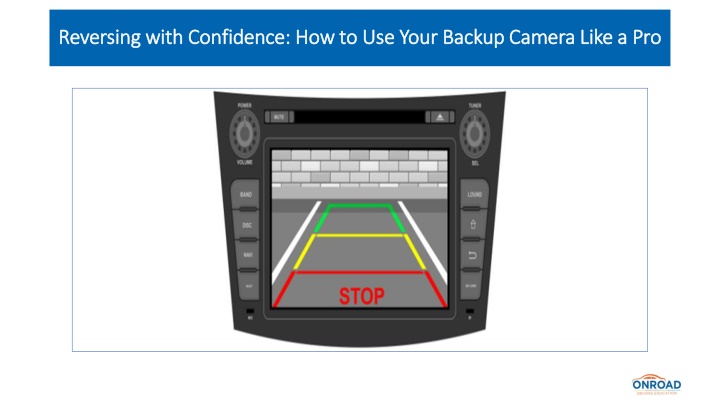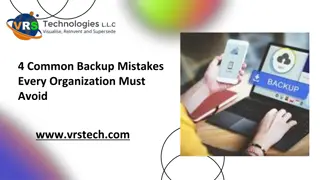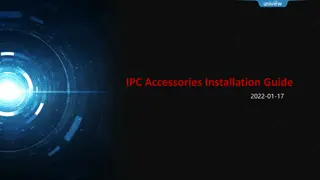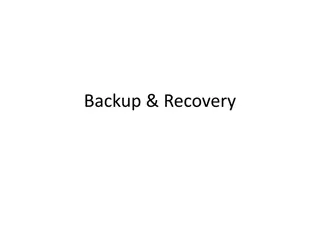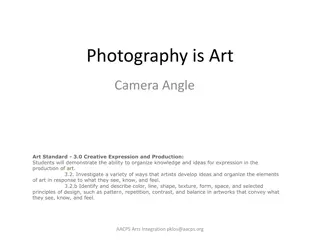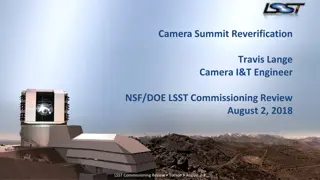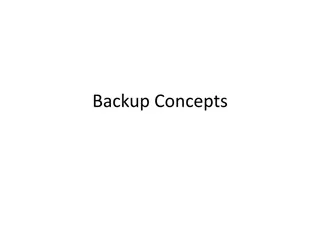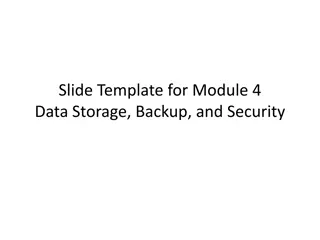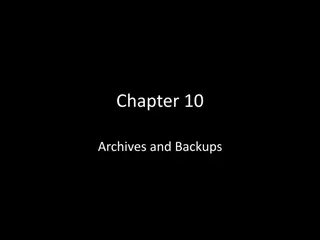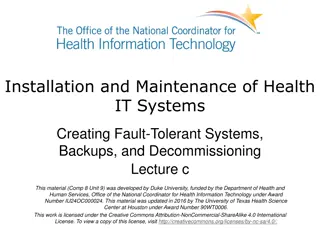Reversing with Confidence How to Use Your Backup Camera Like a Pro
Whether youu2019re a seasoned driver or a novice in a driving school, knowing how to use backup cameras can help you reverse with confidence!
Download Presentation

Please find below an Image/Link to download the presentation.
The content on the website is provided AS IS for your information and personal use only. It may not be sold, licensed, or shared on other websites without obtaining consent from the author.If you encounter any issues during the download, it is possible that the publisher has removed the file from their server.
You are allowed to download the files provided on this website for personal or commercial use, subject to the condition that they are used lawfully. All files are the property of their respective owners.
The content on the website is provided AS IS for your information and personal use only. It may not be sold, licensed, or shared on other websites without obtaining consent from the author.
E N D
Presentation Transcript
Reversing with Confidence: How to Use Your Backup Camera Like a Pro Reversing with Confidence: How to Use Your Backup Camera Like a Pro
Reversing with Confidence: How to Use Your Backup Camera Like a Pro Reversing with Confidence: How to Use Your Backup Camera Like a Pro As the technology advances, driving a car becomes that much easier. Whether it s parallel parking or reversing, the latest technologies are making even the trickiest of driving maneuvers look effortless. Backup cameras are one such feature of a car that makes the process of reversing the car smooth and straightforward. Whether you re a seasoned driver or a novice in a driving school, knowing how to use backup cameras can help you reverse with confidence! Most modern cars have inbuilt backup cameras with guidelines to help drivers gauge the distance and angles properly while reversing. They improve the precision of the maneuver and enhance safety. However, to use them to their best advantage, drivers must first understand how they work. And if you ve not paid attention to reversing in your driving lessons, here s your chance to learn it again. In this post, we will discuss how to use your backup camera like a pro and make the most of its guidelines. How Helpful are Backup Cameras? Backup cameras are not the latest innovation. However, their popularity and prevalence have grown slowly and gradually. Ever since their innovation, they have revolutionized the way we reverse. While they can and should never replace good driving habits, backup cameras do help improve precision and control while reversing. They give you a clear view of your car s backside so that you can judge distances better and avoid possible hazards. However, relying solely on the cameras is also not wise. Along with the cameras, use your side mirrors and rearview mirror and look back to check your blind spots to ensure safe reversal.
Reversing with Confidence: How to Use Your Backup Camera Like a Pro Reversing with Confidence: How to Use Your Backup Camera Like a Pro How Does a Backup Camera Ensure Your Driving Safety? Although backup cameras guide a driver to reverse accurately, there s some process and technology to it. Usually, backup cameras display some guidelines to help you gauge distances. These camera guidelines are of two types: static and moving. Let us look at these guidelines in detail: Static Guidelines: Distance and Danger Zones The fixed lines on your screen that help you determine distances are the static guidelines. They show the width of your vehicle, the distance between your car and any obstacles, and the path that your vehicle takes while reversing. These lines are usually colour-coded and each colour has a different meaning. So, What Do the Coloured Lines Mean on the Reverse Camera? The colours of the static guidelines of the backup cameras are as follows: Green -It represents a safe zone, meaning there s plenty of space. Yellow - It represents a caution zone, advising you to be extra careful. Red - It represents a danger zone, warning you to stop immediately to avoid hitting something. While these lines typically extend about six feet behind the car, this distance can change from model to model.
Reversing with Confidence: How to Use Your Backup Camera Like a Pro Reversing with Confidence: How to Use Your Backup Camera Like a Pro Moving Guidelines: Steering and Trajectory Some cars also have moving guidelines that adjust according to the movement of your steering wheel. Moving guidelines show the path where your car is headed. These lines can help in: Parallel Parking - Parallel parking requires you to align your vehicle to the curb properly. Moving lines can help you with the precise positioning of the vehicle. Reversing into Tight Spaces - As a driver, you ll often face situations where you ll have little parking space. In such cases, parking in reverse can be a tricky challenge. Moving lines of the backup camera can help you judge the distance as well as highlight the path you need to follow to park smoothly and accurately. General Navigation - In terms of general navigation, moving lines can show you how slight steering adjustments can affect your path, helping you reverse smoothly and avoid accidents easily. If your car doesn t have moving guidelines, don t worry! You can still use static lines in combination with your mirrors to ensure a smooth reverse.
Reversing with Confidence: How to Use Your Backup Camera Like a Pro Reversing with Confidence: How to Use Your Backup Camera Like a Pro Best Practices for Using Your Backup Camera Like a Pro Whether you re attending a driving school Sydney or brushing up your driving skills with a Safer Drivers Course, mastering reverse parking is an essential part of becoming a proficient driver. And backup cameras can help you reverse smoothly and efficiently if you know what to do with them. Here are some tips to use your backup camera correctly while staying safe: Use all your mirrors - While backup cameras are effective, they cannot replace your observational skills. The camera covers a big space, but there can still be areas where it doesn t reach. You should adjust the car s mirrors according to the camera settings to ensure you cover as many blind spots as possible. The camera is just a tool, not a replacement for proper observation. Always check your surroundings - Along with reverse cameras, using other traditional ways of checking blind spots is also necessary. You can look back over your shoulder to spot possible hazards. Go slow and steady- When reversing there s always a chance that you may misjudge the distance or someone may come up from behind suddenly. If you re reversing at a high speed, you ll end up in an accident. Always go slowly and reverse gradually. Clean your camera lens regularly - A dirty camera can distort your view. Ensure your mirrors and camera lenses are clean by wiping them regularly. Practice in a safe area - Find an empty parking lot and get comfortable using the guidelines.
Reversing with Confidence: How to Use Your Backup Camera Like a Pro Reversing with Confidence: How to Use Your Backup Camera Like a Pro Why Backup Cameras Aren t Enough: The Importance of Other Safety Aids While backup cameras are incredibly helpful, they don t eliminate all risks. Using backup cameras alone for reversing and other maneuvers is not enough. They can sometimes miss blind spots, pedestrians, and small objects. That s why it s important to combine the camera with mirrors, parking sensors, and basic observation skills. If you want to be a safer driver, you need to combine camera use with proper mirror checks and awareness of your surroundings. Conclusion While using a backup camera correctly can boost your confidence while reversing, it s not a substitute for safe driving habits. By understanding static and moving guidelines, checking your mirrors, and staying aware of your surroundings, you can make reversing safer and more precise. Whether you re a new learner or a proficient driver looking to improve your skills, enrolling in a Safer Drivers Courseat a reputable Driving School can help you learn to use backup cameras correctly. If you re looking to sharpen your reversing skills, consider enrolling in a Driving School in Sydney like Onroad driving education. With our expert instructors and professional guidance, you ll master reversing and parking with ease so you can drive with confidence every time!
Contact Us Contact Us Phone : +61 1300 667 623 Email : info@onroad.com.au Website : https://onroad.com.au/ Address : 20 Lexington Drive, Bella Vista, Sydney, NSW, Australia, New South Wales
